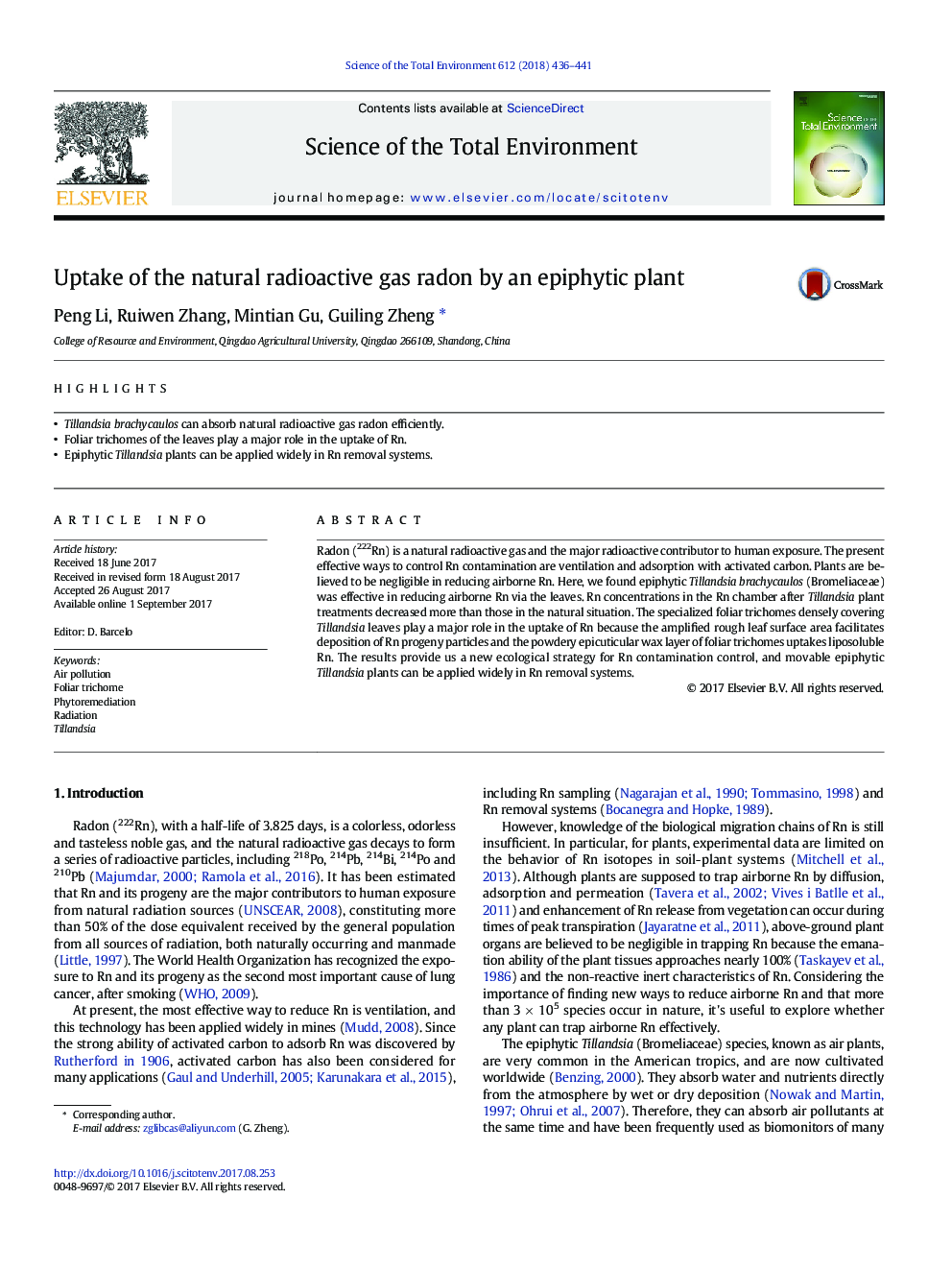| کد مقاله | کد نشریه | سال انتشار | مقاله انگلیسی | نسخه تمام متن |
|---|---|---|---|---|
| 5749901 | 1619691 | 2018 | 6 صفحه PDF | دانلود رایگان |
- Tillandsia brachycaulos can absorb natural radioactive gas radon efficiently.
- Foliar trichomes of the leaves play a major role in the uptake of Rn.
- Epiphytic Tillandsia plants can be applied widely in Rn removal systems.
Radon (222Rn) is a natural radioactive gas and the major radioactive contributor to human exposure. The present effective ways to control Rn contamination are ventilation and adsorption with activated carbon. Plants are believed to be negligible in reducing airborne Rn. Here, we found epiphytic Tillandsia brachycaulos (Bromeliaceae) was effective in reducing airborne Rn via the leaves. Rn concentrations in the Rn chamber after Tillandsia plant treatments decreased more than those in the natural situation. The specialized foliar trichomes densely covering Tillandsia leaves play a major role in the uptake of Rn because the amplified rough leaf surface area facilitates deposition of Rn progeny particles and the powdery epicuticular wax layer of foliar trichomes uptakes liposoluble Rn. The results provide us a new ecological strategy for Rn contamination control, and movable epiphytic Tillandsia plants can be applied widely in Rn removal systems.
Journal: Science of The Total Environment - Volume 612, 15 January 2018, Pages 436-441
